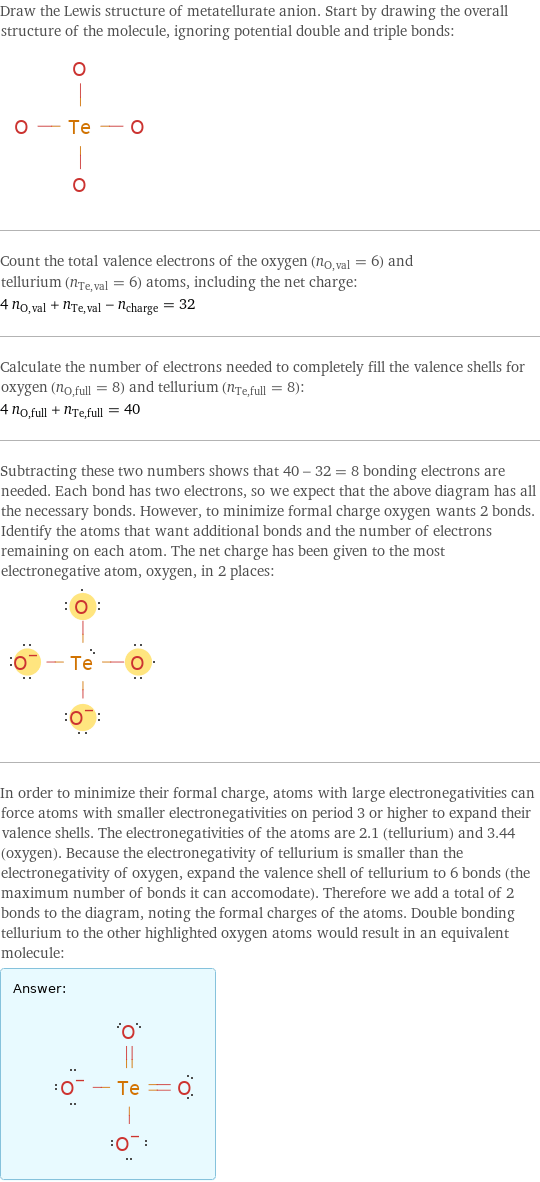Input interpretation

metatellurate anion
Lewis structure

Draw the Lewis structure of metatellurate anion. Start by drawing the overall structure of the molecule, ignoring potential double and triple bonds: Count the total valence electrons of the oxygen (n_O, val = 6) and tellurium (n_Te, val = 6) atoms, including the net charge: 4 n_O, val + n_Te, val - n_charge = 32 Calculate the number of electrons needed to completely fill the valence shells for oxygen (n_O, full = 8) and tellurium (n_Te, full = 8): 4 n_O, full + n_Te, full = 40 Subtracting these two numbers shows that 40 - 32 = 8 bonding electrons are needed. Each bond has two electrons, so we expect that the above diagram has all the necessary bonds. However, to minimize formal charge oxygen wants 2 bonds. Identify the atoms that want additional bonds and the number of electrons remaining on each atom. The net charge has been given to the most electronegative atom, oxygen, in 2 places: In order to minimize their formal charge, atoms with large electronegativities can force atoms with smaller electronegativities on period 3 or higher to expand their valence shells. The electronegativities of the atoms are 2.1 (tellurium) and 3.44 (oxygen). Because the electronegativity of tellurium is smaller than the electronegativity of oxygen, expand the valence shell of tellurium to 6 bonds (the maximum number of bonds it can accomodate). Therefore we add a total of 2 bonds to the diagram, noting the formal charges of the atoms. Double bonding tellurium to the other highlighted oxygen atoms would result in an equivalent molecule: Answer: | |
General properties

formula | (TeO_4)^(2-) net ionic charge | -2 alternate names | tetraoxotellurate | metatellurate | metatellurate(2-)
Ionic radius

thermochemical radius | 254 pm
Units

Other properties

ion class | anions | oxoanions | polyatomic ions common sources of ion | sodium tellurate dihydrate (1 eq) | potassium tellurate hydrate (1 eq)